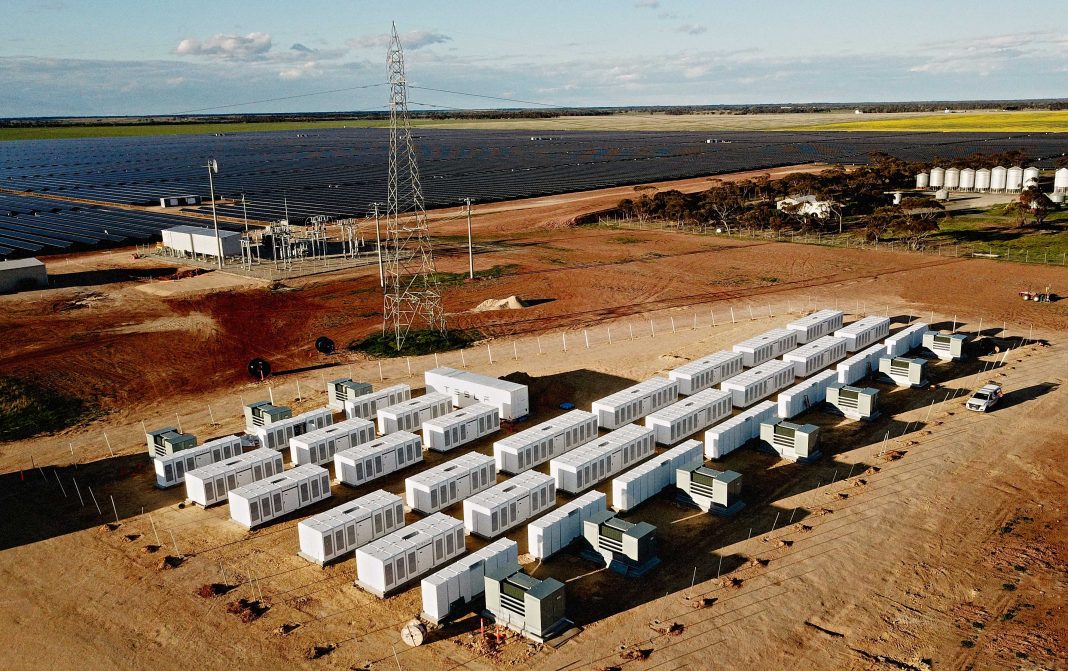The Australian Energy Market Operator (AEMO) has published a ‘white paper’ aiming to accelerate the introduction of grid-scale inverters to support Australia’s future power system as it transitions from synchronous generation towards inverter-based resources (IBR) such as solar PV, wind energy, and battery energy storage systems (BESS).
The Application of Advanced Grid-scale Inverters in the NEM paper outlines how the shift from synchronous generation towards IBR is changing the way the industry must plan for the secure operation of the National Electricity Market (NEM).
AEMO said this includes developing a power system capable of running at 100% instantaneous penetration of renewable energy, including grid-scale solar, wind, hydro and rooftop PV.
AEMO future energy systems manager Chris Davies said the engineering white paper focuses on the potential of advanced grid-scale inverter technology to support the operation of the NEM as the penetration of IBR increases, particularly through the use of grid-forming capabilities that can help stabilize the grid.
“The NEM is undergoing a once-in-a-lifetime transition from synchronous generation, such as thermal and hydro, to variable inverter-based renewable generation,” he said.
“When offline or decommissioned, synchronous generators can no longer provide the critical system stability capabilities that the grid relies on, requiring these capabilities be provided by different technologies.
“AEMO has been working with stakeholders to understand the potential of grid-forming inverters to address many of the challenges facing the future power system.”
The supply of electricity in the NEM has historically been dominated by large, fossil-fuel-fired synchronous generators. The design of the NEM was based on the capabilities provided by synchronous generation but the network has undergone transformational change in its generation mix with IBR including wind and solar being deployed at a scale and pace not seen anywhere else in the world.

AEMO said some regions of the NEM are leading the world in demonstrating operation of a gigawatt-scale power system with low levels of synchronous generation. Figures provided by the market operator show South Australia and Tasmania have recorded periods with 93% and 82% IBR generation respectively.
Popular content
While the generation mix in the NEM is changing, the physics that determine the grid’s secure operation remain the same, meaning the attributes provided by synchronous generation will continue to be required during periods of high IBR penetration.
Davies said advanced inverter technology may be able to address many of the challenges facing the NEM today for the integration of renewable resources but warned that at present this potential is not demonstrated at the necessary scale, and focused engineering development is urgently needed to address the remaining issues and realize the promise of this technology.
“To realise the potential of this technology, we need to quickly come together as an industry to prioritize the time and resources needed to prove this technology at scale and support an effective transition,” he said.
The paper identifies four key areas of application for advanced inverters, including connecting IBR in weak grids, supporting system security, island operation, and system restart.

Developed as part of AEMO’s Engineering Framework, the paper recommends prioritizing the deployment of grid-forming capabilities on grid-scale battery energy storage systems, saying the technology provides capability to deliver firm, flexible energy behind the inverter.
AEMO said with a growing number of grid-scale batteries committed or proposed on the NEM, there is a rare window of opportunity to build grid-forming capabilities into this battery fleet today.
This would enable testing and demonstration of these capabilities at scale and begin to build a fleet that can support the power system as it transitions to high IBR penetrations.
While large, standalone BESS provides one way to deliver grid-forming capability, AEMO also suggested smaller batteries coupled to variable renewable energy (VRE) plant might also provide a flexible resource mix to cater for the applications described in the paper.
AEMO said further collaboration with stakeholders will be needed to develop effective pathways toward the application of advanced inverters and it will continue to work with the industry to identify additional priority actions needed to prepare the future power system.
This content is protected by copyright and may not be reused. If you want to cooperate with us and would like to reuse some of our content, please contact: editors@pv-magazine.com.



Couldn´t it be helpfull to use the Turbines and Generators of decomissioned powerstations as big flywheels rotating at 50hz – speed? This could provide grid-stability by mere physics of the rotating mass. Losses could be minimized by evacuating the housings. The machines are already there and could live for many years.
j